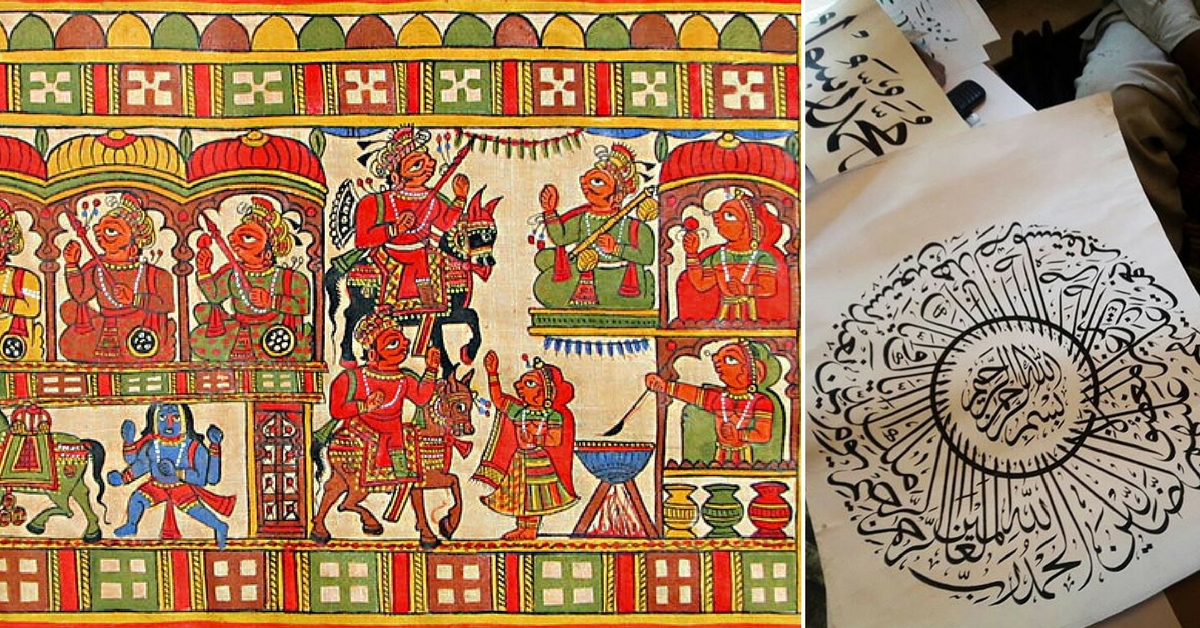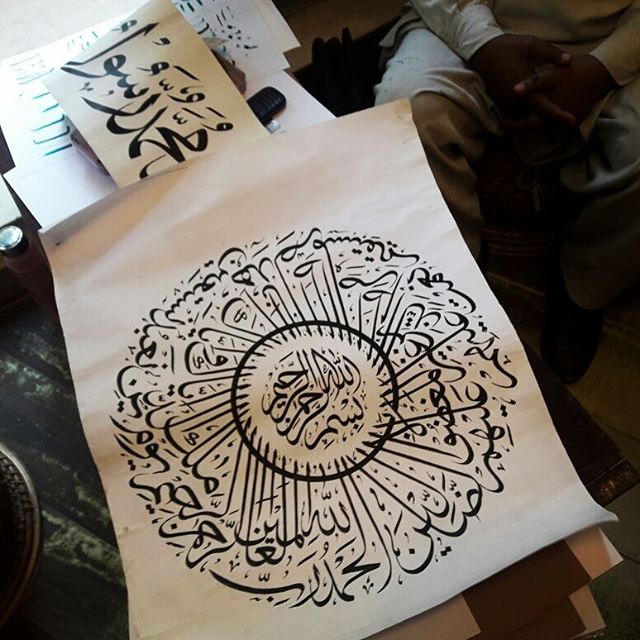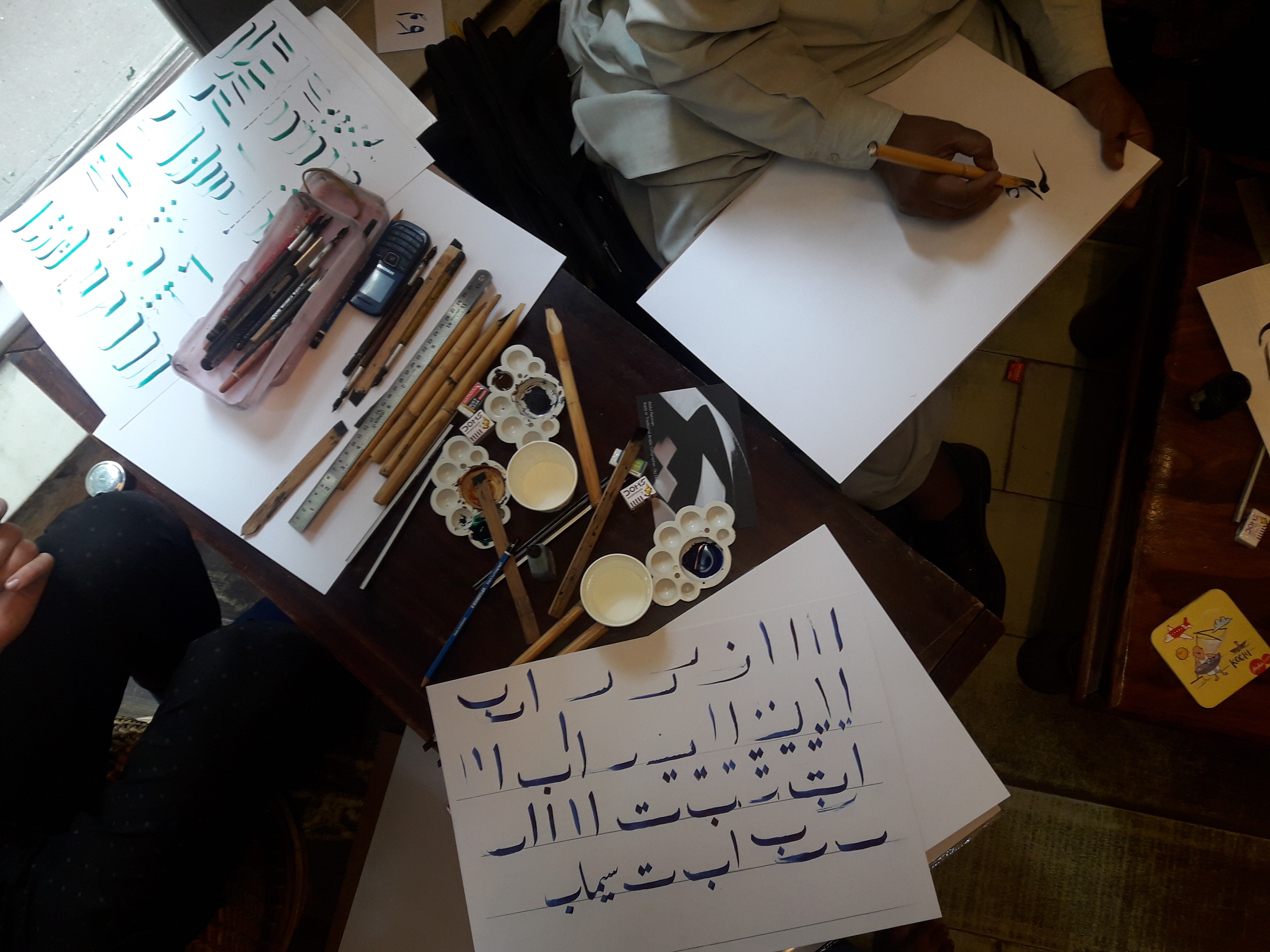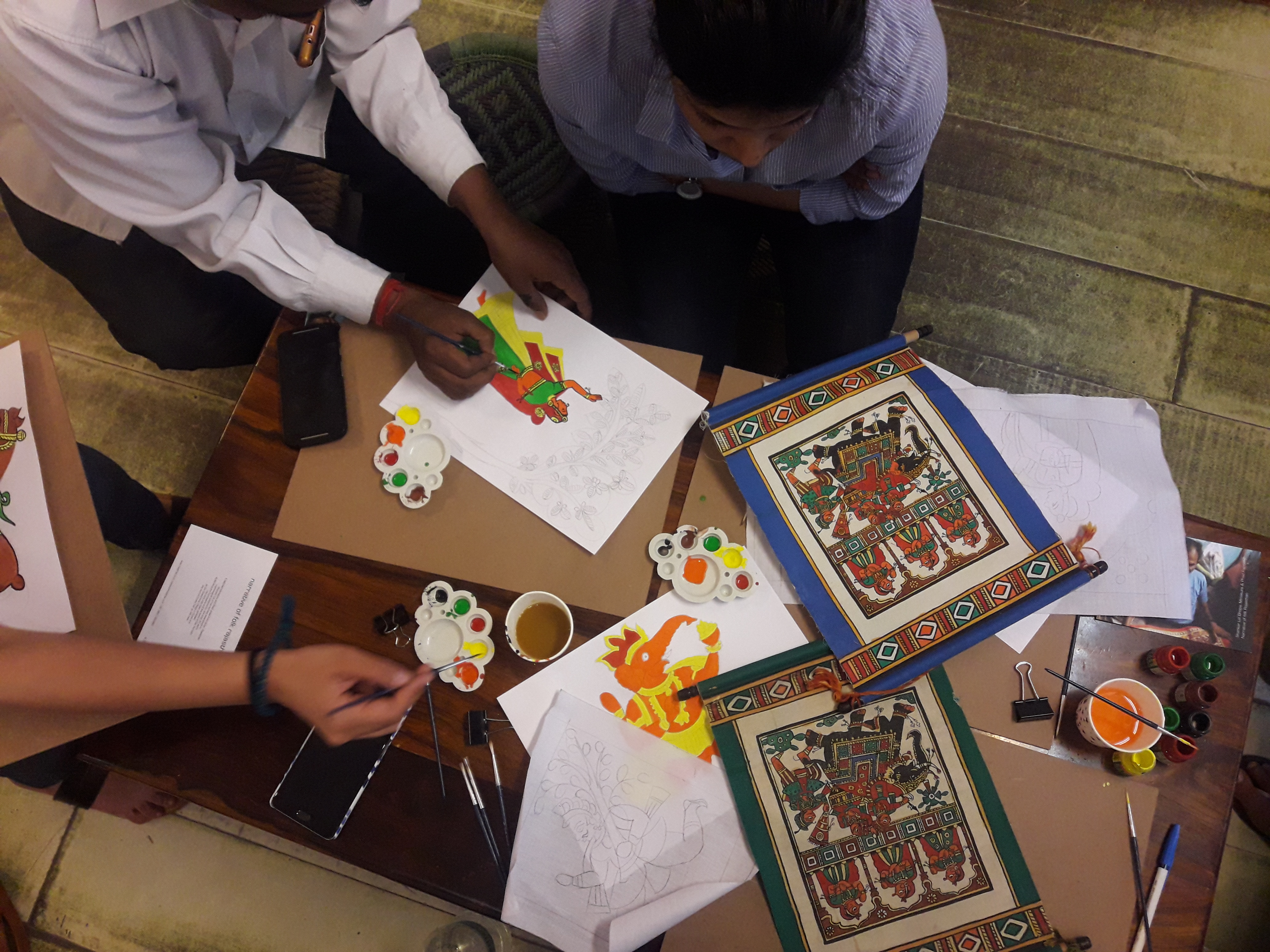TBI Blogs: Why Arabic Calligraphy & Phad Painting Are the Perfect Representation of India’s Religious Harmony
Several Indian art forms have suffered a steady decline as the years have passed. Two such iconic art forms are Arabic Calligraphy and Phad Painting, both strong representations of India’s rich spiritual and cultural heritage.

Several Indian art forms have suffered a steady decline as the years have passed. Two such iconic art forms are Arabic Calligraphy and Phad Painting, both strong representations of India’s rich spiritual and cultural heritage.
India has been a country with a very rich history, and a much richer heritage. India’s heritage has been a part of many art forms which have been brought to and developed in India, and some of which are born in India itself. Even today, the country is home to numerous cultures that have been an umbrella for various art forms.
Prepare to follow the journey of two major art forms of India—Arabic Calligraphy, adapted in India, and Phad Paintings, born in Rajasthan, India.
Originating in the deserts, both Arabic Calligraphy and Phad Paintings share the same core purpose for existence—spirituality. Arabic Calligraphy hails from Arabia and was introduced in India around the 7th century by early Arabic traders. The practice was initiated to preserve the scripts of the Holy Quran, and since then, the art form has emerged as a mainstream art.
Arabic Calligraphy developed analogously with the establishment of the Delhi Sultanate in India.

The various dynasties of the Delhi Sultanate made several contributions to the development of Arabic Calligraphy in India. For example, the Qutub Minar built by Qutubuddin Aibak is decorated and covered with intricate carvings and verses from the Quran. Thus, the art form flourished under the reign of the Delhi Sultanate. It is prevalent in India’s monumental heritage, like Humayun’s Tomb in Delhi, and coins recognized by the Mughals. Therefore, the establishment of Muslim rule in India established a diversity of culture, and also laid the groundwork for the permanency of the then-fresh ink of Arabic Calligraphy.

On the other hand, Phad Painting is an astonishing art form born and brought up in Rajasthan, India. It serves as a unique mobile temple depicting the glorious past of the state. Artists use Phad, meaning ‘fold’ in the local dialect, as a canvas, in the form of a large scroll.
It’s a style of religious folk painting, mainly focussing on episodes from the life of local deities Pabuji and Devnarayan.

Phad Painting has prospered as an art form for more than 700 years in Rajasthan. The canvas, or the scroll, is mainly 12-15 ft. long, where the artist paints the entire life of the deity. Divided into many sections, the entire procedure is very long and elaborate. The artists take a month or more to complete one Phad Painting with proper precision, using the hand-spun cotton cloth as the canvas, and natural colours. The most interesting part of a Phad Painting is its existence as a Mobile Temple. After its completion, Bhopas (singer-priests) carry the scroll and unroll it after sunset, perform customary rituals, and start narrating the epic stories of the folk deities.

Both Arabic calligraphy and Phad painting represent the virtues of religious and spiritual aspects of life. One is a simple, yet highly artistic, illustration of text from the Holy Quran, and the other is the design of epic stories of Pabuji. Together, the art forms are proper expressions of diversity. However, despite the significance of these art forms in our heritage, they have been declining steadily in the modern era.
Revival is important. We have to preserve the drying ink of Arabic Calligraphy and the fading touch of Phad Painting. Bringing back our dying heritage has to be a major call. The souls at Nazariya have pledged to do so. Nazariya, as an organisation, is on a drive to revive the substantial art forms of India. As a part of the drive, we have been conducting workshops on Arabic Calligraphy and Phad Paintings with our artisans, with the motive to connect the youth with Arabic calligraphy and Phad Painting.
Come join us, and be a part of our journey. Come relive and embrace our collective history!


To know the detailed schedule of Nazariya’s Arabic Calligraphy and Phad Painting workshops, and to register, visit the website.
Like this story? Or have something to share? Write to us: [email protected], or connect with us on Facebook and Twitter.
NEW: Click here to get positive news on WhatsApp!

Similar Story

Kyani to Nirula’s: Artist Takes India Down Memory Lane with Sketches of Iconic Eateries
Aditya Raj from Jaipur visited an exhibition during his law school days and decided he would be an artist. Here’s his visual representation of a nostalgia trip with pictures of the most iconic eateries in India.
Read more >
If you found our stories insightful, informative, or even just enjoyable, we invite you to consider making a voluntary payment to support the work we do at The Better India. Your contribution helps us continue producing quality content that educates, inspires, and drives positive change.
Choose one of the payment options below for your contribution-
By paying for the stories you value, you directly contribute to sustaining our efforts focused on making a difference in the world. Together, let's ensure that impactful stories continue to be told and shared, enriching lives and communities alike.
Thank you for your support. Here are some frequently asked questions you might find helpful to know why you are contributing?


This story made me
-
97
-
121
-
89
-
167












